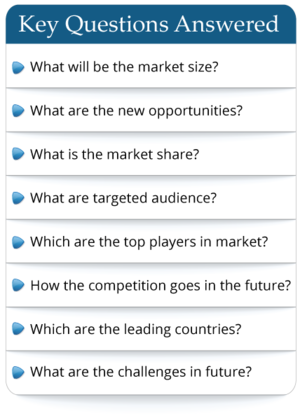Global Trading Card Game Industry Trends Analysis Report 2024, Forecast to 2032 (Broken Down by Type, End User, Regional Analysis, and Competitive Landscape)
SKU ID : Maia-25788459 | Publishing Date : 23-Nov-2023 | No. of pages : 105
Trading Card Game (TCG), also known as Collectible Card Games (CCG) or many other names, is a strategy card game created in 1993. The difference between TCG and CCG is that TCG players can trade cards with each other to build stronger decks. These cards use proprietary artwork or images to beautify the card. TCGs can depict any fantasy or sci-fi genre, horror themes, cartoons and even sports. Game text is also on the cards for interacting with other cards in a strategic way. Players can also use dice, chips, card sleeves or game mats to supplement their gameplay.
Influence of COVID-19 Outbreak on Trading Card Game
Industry Development
The COVID-19 pandemic is a serious and sudden global crisis, and overall, the post-pandemic world is unlikely to be fundamentally and radically different. But it is clear that the pandemic will bring about many major changes in the world. It will exacerbate some negative trends and accelerate some positive ones, and overall it will accelerate changes in the world and make the international situation more complex. The epidemic has an impact on the development of the industry through the macro environment.
The pandemic has led to a global economic recession
The pandemic has sharply reversed expectations of modest world economic growth in early 2020. The global economy faces the risk of recession as economic activity is depressed, hitting production and consumption. According to the International Monetary Fund, the global economy will shrink by 4.9% in 2020. Since the outbreak of COVID-19, the employment situation in various countries has become more severe. The outbreak has hit global stock markets and international oil markets hard. Investors around the world panicked, triggering an unprecedented three circuit breakers in the U.S. stock market in the space of a week.
The epidemic has caused huge losses to related industries and international trade The outbreak has hit the service sector and many small and medium-sized enterprises hardest. The pandemic has led to restrictions in 96% of countries. According to relevant reports of UNCTAD and the World Trade Organization, the pandemic seriously disrupted the global economy, leading to a sharp decline in international trade in 2020 and almost collapse at one point, a record decline. According to the UNCTAD report, global trade in goods fell by 5.6% year on year in 2020, which is the biggest year-on-year decline in trade in goods since the international financial crisis in 2008. Compared with trade in goods, trade in services has been hit harder by the epidemic. Trade volume has fallen to the level of the 1990s, down 15.4 percent year on year which is the biggest decline since 1990. According to the WTO report, among the indicators of trade in services, the air passenger transport index and the container transport index declined the most, while the financial transaction index, the information and communication technology services index and the purchasing managers' index in the service sector were all below trend.
Childhood nostalgia and social interaction drive players to keep playing and collecting cards
Many players have a strong emotional connection to trading card games, often stemming from childhood memories. This nostalgia factor can drive players to keep playing and collecting cards, as well as introduce new players to the game. Plus, trading card games provide a social experience that can be enjoyed with friends and family. Players can come together to play games, participate in events, and trade cards. This social aspect of gaming can be an important driver for many players.
Trading card game value
Trading cards embellish the cards with proprietary artwork or images that can depict any fantasy or sci-fi genre, horror themes, cartoons, or even sports. For players who like to open new packs and collect rare cards, the collectible value of trading card games is one of the driving factors. The rarity of certain cards can also drive up their value, making them highly sought after by collectors.
Competitive games such as tournaments drive the growth of the trading card games market
Competitive games such as tournaments in trading card games are an important factor in attracting players. Competitive games provide a competitive environment where players can test their strategies and skills and compete against other players. This keeps players interested, and tournaments provide rewards and honors that motivate players to keep playing.
Global Market Region Overview:
In 2022, the share of the Trading Card Game market in United States stood at 24.55%.
Global Market Company Overview:
Hasbro is one of the major players operating in the Trading Card Game market, holding a share of 6.90% in 2023.
Hasbro Inc. is an American multinational conglomerate holding company incorporated and headquartered in Pawtucket, Rhode Island. Hasbro owns the trademarks and products of Kenner, Milton Bradley, Parker Brothers, and Wizards of the Coast, among others.
The Pokémon Company is a Japanese company responsible for brand management, production, publishing, marketing, and licensing of the Pokémon franchise, which consists of video game software, a trading card game, anime television series, films, manga, home entertainment products, merchandise, and other ventures.
Global Market Segmentation Overview:
By type, Physical Card segment accounted for the largest share of market in 2022.
Digital trading card games are played on electronic devices such as computers, smartphones, or tablets. Players can purchase and collect virtual cards, build decks, and compete against other players online. Digital TCGs often have features such as automated gameplay, matchmaking, and online leaderboards.
Physical trading card games, on the other hand, are played with physical cards that are purchased in packs or individually. Players can collect and trade physical cards, build decks, and compete against other players in person. Physical TCGs often have a social aspect, as players can meet up and play together at local game stores or events.
Global Market End User Overview:
The market's largest segment by application is the segment Adult, with a market share of 67.90% in 2022.
This global Trading Card Game market research report provides a comprehensive overview by conducting both qualitative and quantitative analysis of the market, sharing concrete numbers and thorough insights from different market segments. The quantitative analysis includes both historical and forecast data of various market segments, while the qualitative analysis of market dynamics including growth drivers, challenges, constraints, etc. provides in-depth insight into the market situation and prospects.
Besides, the study maps the leading as well as the fastest-growing regional markets. It further enables stakeholders to identify the key country-level markets within each region.
As a crucial part of the Trading Card Game market, we provide competitive landscape analysis which incorporates the market ranking of the major players, along with new service/product launches, business expansions, acquisitions, and performance in the past five years. That allows stakeholders to understand their competitive environment and provides insight into the current positions of key players in the market.
The readers of this report will understand how the Trading Card Game market status has changed across the globe under the Russia-Ukraine War and inflation.
Key players in the global Trading Card Game market are covered in Chapter 4 and Chapter 8:
The Pokémon Company
Blizzard Entertainment
Fantasy Flight Games
Bushiroad
CyberAgent
Upper Deck Company
Riot Games
Bandai
Konami Holdings Corporation
Hasbro
Legend Story Studios
In Chapter 6 and Chapter 9.1, on the basis of types, the Trading Card Game market from 2019 to 2032 is primarily split into:
Digital Game
Physical Card
In Chapter 7 and Chapter 9.2, on the basis of End Users, the Trading Card Game market from 2019 to 2032 covers:
Teenager
Adult
Children
Geographically, the detailed analysis of consumption, revenue, market share and growth rate, historical and forecast (2019-2032) of the following regions are covered in Chapter 5 and Chapter 10:
North America
United States
Canada
Europe
Germany
France
United Kingdom
Spain
Russia
Poland
Others
Asia-Pacific
China
Japan
South Korea
Southeast Asia
India
Australia
Others
Latin America
Mexico
Brazil
Others
Middle East and Africa
GCC
South Africa
Others
Outline:
This report consists of 11 chapters. Below is a brief guideline to help you quickly grasp the main contents of each chapter:
Chapter 1 mainly defines the market scope and introduces the Trading Card Game industry, with an executive summary of different market segments (by type, end user, region, etc.), and general regulatory environment analysis.
Chapter 2 is the analysis of the whole market industry chain, covering key raw materials and suppliers, business mode and production process, cost structure analysis, and alternative product, also providing information on major distributors, and downstream customers.
Chapter 3 provides a qualitative analysis of the market dynamics, including market drivers, constraints and challenges, emerging market trends, PESTEL analysis, consumer insights, and the impact of the Russia and Ukraine war.
Chapter 4 analyzes the current competitive situation of the market by providing data regarding the players, including their revenue and sales volume with corresponding market shares, and prices. In addition, information about market concentration rates, key product launch news, mergers & acquisitions, expansion plans will also be covered.
Chapter 5 focuses on the regional market, presenting detailed historical data (i.e. sales volume, revenue) of the most representative regions and countries in the world.
Chapters 6-7 analyze the historical market sales volume, revenue, share, and price by breaking data on the basis of different product types, as well as the downstream end-user market, with the aim of helping readers understand the market more deeply.
Chapter 8 shares a profile of the key players in the market, together with their corporation information, product portfolio and specification, market performance (i.e. sales volume, price, revenue, gross margin), business and markets served, recent developments/updates, etc.
Chapters 9-10 provide an analysis of the development trends over the next few years in terms of product type, end-users, major regions and countries.
Chapter 11 concludes with an explanation of the data sources and research methods. Analysis and verification are conducted through preliminary research to obtain final quantitative and qualitative data.
Years considered for this report:
Historical Years:
2019-2023Base Year:
2023Estimated Year:
2024Forecast Period:
2024-2032Frequently Asked Questions
- By product type
- By End User/Applications
- By Technology
- By Region

 Pre-order Enquiry
Pre-order Enquiry Request Free Sample
Request Free Sample


 Request Sample
Request Sample Request Discount
Request Discount










